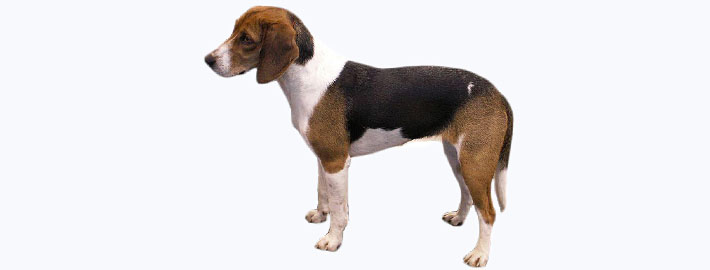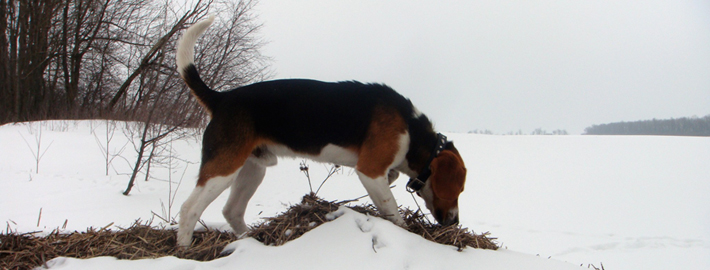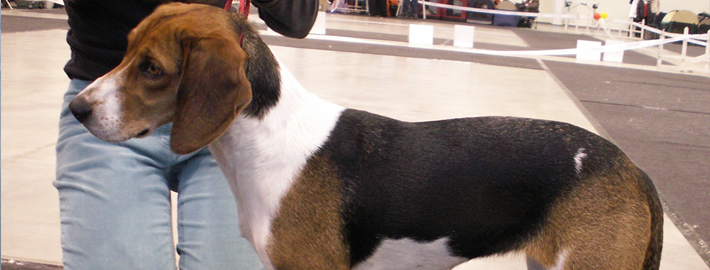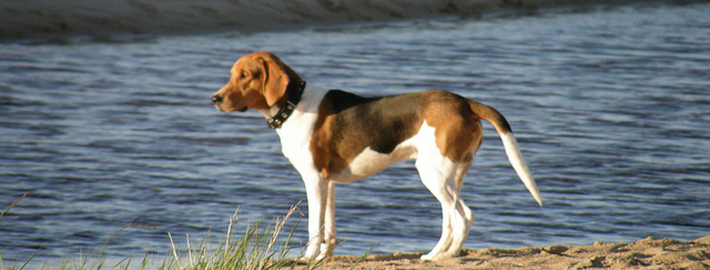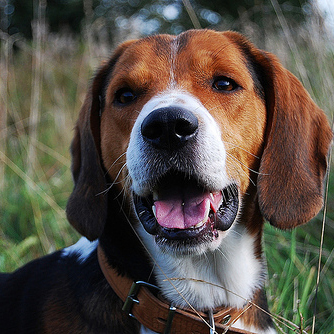What makes the Estonian Hound Unique?
The Estonian Hound, as a hunting dog, had to be capable of working with strange hunters on a regular basis. Human aggression is seen as intolerable by breeders and has largely been eliminated. Although only very rarely aggressive, the Estonian Hound is considerably less fond of strangers than many scenthounds.
Breed Groups
Page Contents
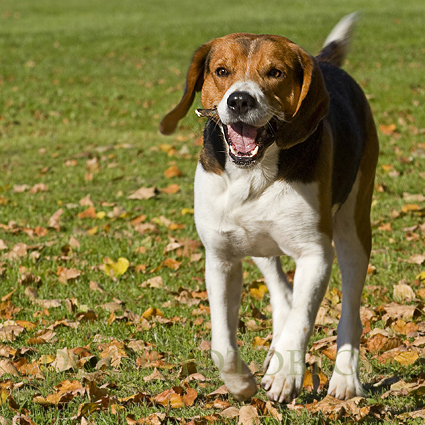
SnapShot
Is the Estonian Hound Right For You?
This breed is pleasant and very family-oriented, good with kids and other pets. It thrives on a routine and stability, so if you or your family travel often, the Estonian Hound is not for you.
As with every dog, exercise is important, but since this breed was developed to make long hunting trips over varying terrain, it needs at least a good hour of walking a day.
Grooming an Estonian Hound means an occasional bath and brushing. They tend to be average shedders.
In 5 Words
- Cheerful
- Intelligent
- Balanced
- Calm
- Active
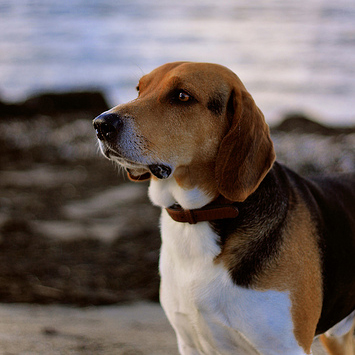
Characteristics
Learn About the Estonian Hound
Description
General Description
The Estonian Hound is a dog of medium size and a strong muscular body, bone structure and muscles that are well developed. It has no folds in its skin and drop ears. The coat is short and rough and should be shiny. The undercoat is weakly developed. This breed’s eyes are dark brown colored. The Estonian Hound usually has black patches and a dark pigmented skin. The size of the patches is unlimited. Blackish brown color, red patches and a saddle like patches on the back are also allowed but the tip of the tail has to be white. The Estonian Hound’s height is 17–21 inches (43–53 cm) and it weighs 33–44 pounds (15–20 kg).
Short History of the Estonian Hound
The Estonian Hound is the only dog breed developed in Estonia and therefore you may say that an Estonian Hound is the Estonian national breed. Until 1914 mainly so-called Russian-Polish Hounds and English Fox Hounds were used for hunting in Estonia. Their mixes formed local hounds. In the 1920s Finnish Hounds were brought to Estonia and the looks and work of these dogs also changed the local dogs. A law was issued on July 1, 1934, which gave a push for the breeding of an Estonian Hound. The law forbids hunting with dogs that were higher than 17 inches (45 cm.). At that time all the game was hunted with hounds. By 1934 the numbers of game had catastrophically declined and with issuing the law the government tried to avoid over hunting. Forests in Estonia are well organized even these days and hunters don’t need big fast hounds. To form a suitable dog breed Beagles, Swiss Hounds (Gewvhnlicher Schweizer Laufhund), Luzern Hounds (Luzerner Laufhund) and Bern Hounds (Dreifarbiger Berner Laufhund) were brought in. Mixes of local hounds with Beagles and Swiss Hounds were the ones that met all the requirements of the desired hound breed. The influence of these breeds still shows today and has helped to develop a base from which a current Estonian Hound has formed. On December 27, 1954 the Main Government of National Parks and Hunting Economy of the Agriculture Ministry of the Soviet Union approved the Estonian Hound standard. After regaining independence the Estonian Kennel Union approved the breed standard on July 4, 1998 and is now working on the recognition of the breed by FCI.
Temperament
The Estonian Hound is a very calm, even-tempered and always well mannered dog that forms a strong bond with its master and family. It is very friendly, gentle and playful with children and makes a great playmate for them. Highly appreciated for its intelligence, the dog is lively and energetic when doing its primary job; hunting! but is equally laid back and will love to snuggle beside its owner on the couch. This breed is very pleasant, cheerful and happy and would love to be around its family most of the time. Having ideal characteristics, the dog makes a wonderful addition to the family. This loving and intelligent dog has high prey drive but it can be trained not to chase hoofed animals. It can get along well with other dogs in the family but will need early age socialization to get along with other pets like cats. This dog is naturally silent when indoor and does not bark unnecessarily. It is a wonderful scenthound and can go after an interesting smell if not leashed. This dog makes a very good family pet besides being an avid hunter of hares and foxes.
Caring for Your Estonian Hound
General Health
It does not appear as though any health studies have been conducted on the Estonian Hound which makes it impossible to make any definitive statements about the breed’s health. In fact, there is very little information available of any kind detailing this breed’s health. Most seem to believe that the Estonian Hound is a relatively healthy breed. This dog has likely benefitted both from being spared commercial and backyard breeding practices as well as being bred primarily as a working dog. This does not mean that the Estonian Hound is immune from genetically inherited health conditions, but it does mean that this breed is less likely to suffer from them than most purebred dogs.
Grooming & Bathing
Grooming an Estonian Hound means an occasional bath and brushing. They tend to be average shedders.
Exercise & Training
Estonian Hounds need lots of exercise (at least one 1.5-hour long walk a day), where the dog is made to heel beside or behind the human holding the lead, as instinct tells a dog the leader leads the way, and that leader needs to be the human. The Estonian Hound is an energetic working dog with enormous stamina. An Estonian Hound will love a long walk in the forest, if you have a safe area to do this, where it can run around. The Estonian Hound likes to follow its nose and is sometimes difficult to control when it picks up a scent and has taken up a lead. Take caution when exercising this breed around cars. Always use a lead in unsafe areas.

